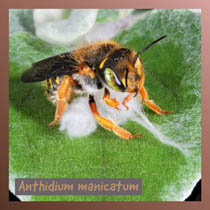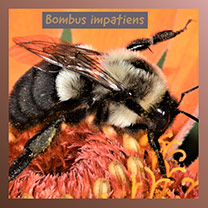Pollinator Species at Flight 93 National Memorial
-
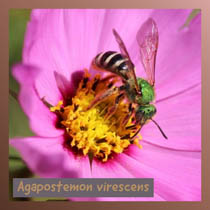
Agapostemon virescens -
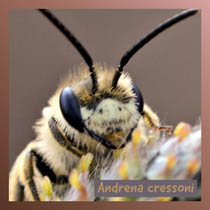
Andrena cressoni -
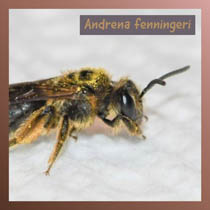
Andrena fenningeri -
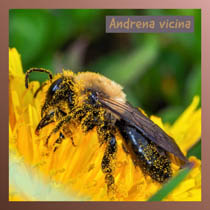
Andrena vicina -
Anthidium manicatum -
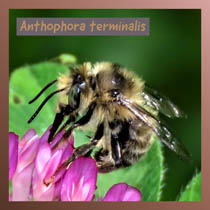
Anthophora terminalis -
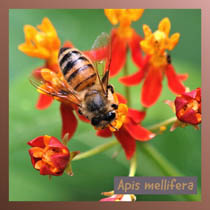
Apis mellifera -
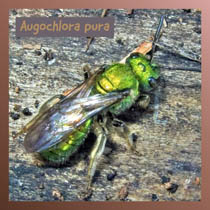
Augochlora pura -
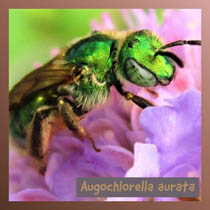
Augochlorella aurata -
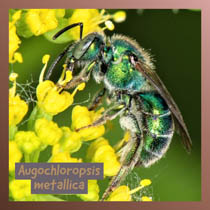
Augochloropsis metallica -
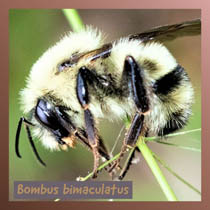
Bombus bimaculatus -

Bombus fervidus -

Bombus griseocollis -
Bombus impatiens -
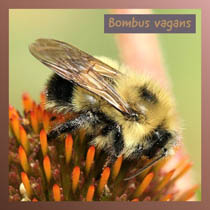
Bombus vagans -
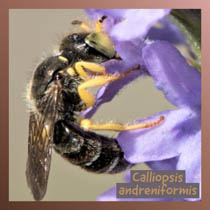
Calliopsis andreniformis -

Ceratina dupla -
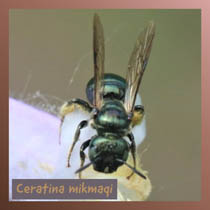
Ceratina mikmaqi -
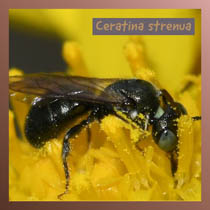
Ceratina strenua -
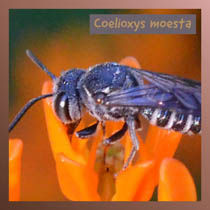
Coelioxys moesta -
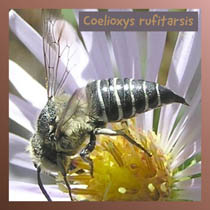
Coelioxys rufitarsis -
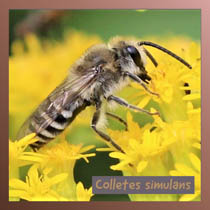
Colletes simulans -
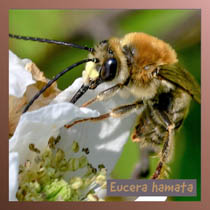
Eucera hamata -
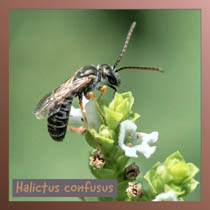
Halictus confusus -
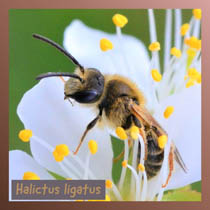
Halictus ligatus -
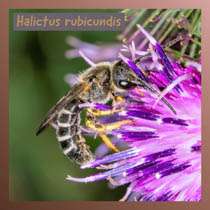
Halictus rubicundis -
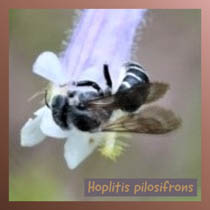
Hoplitis pilosifrons -
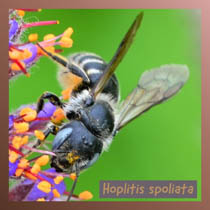
Hoplitis spoliata -
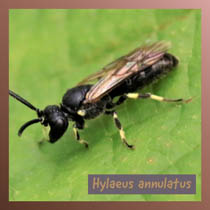
Hylaeus annulatus -
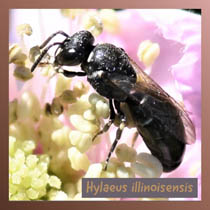
Hylaeus illinoisensis -
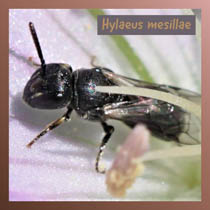
Hylaeus mesillae -
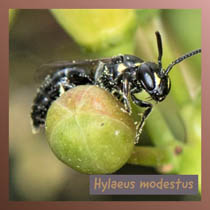
Hylaeus modestus -
.jpg)
Lasioglossum (Dialictus) sp. -
.jpg)
Lasioglossum (Evylaeus) sp. -
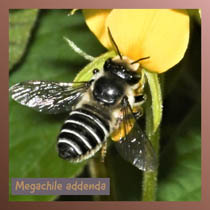
Megachile addenda -
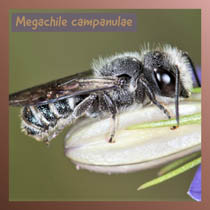
Megachile campanulae -
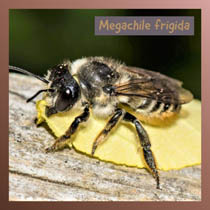
Megachile frigida -
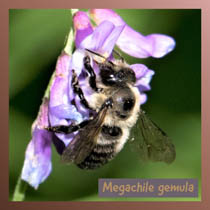
Megachile gemula -
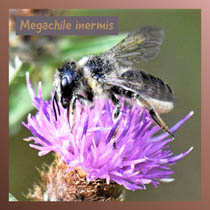
Megachile inermis -
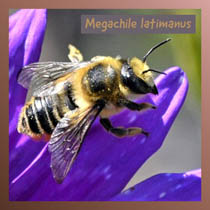
Megachile latimanus -

Megachile montivaga -
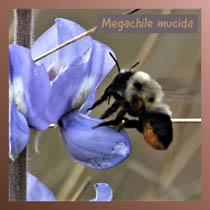
Megachile mucida -
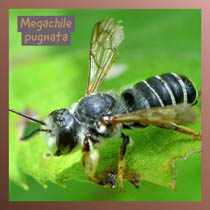
Megachile pugnata -
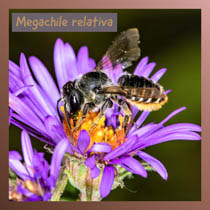
Megachile relativa -
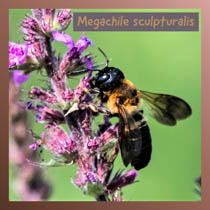
Megachile sculpturalis -

Megachile texana -
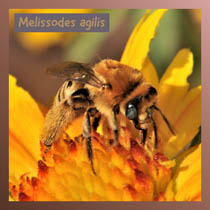
Melissodes agilis -
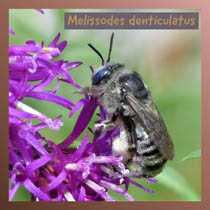
Melissodes denticulatus -
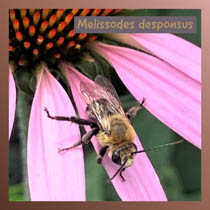
Melissodes desponsus -
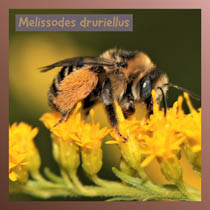
Melissodes druriellus -
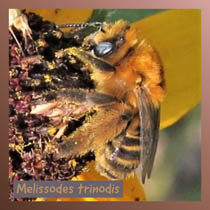
Melissodes trinodis -
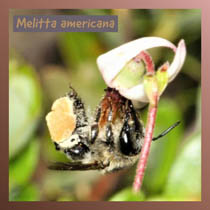
Melitta americana -
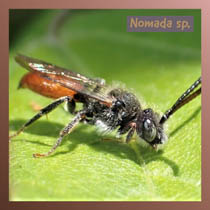
Nomada sp. -
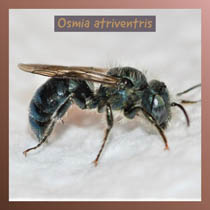
Osmia atriventris -
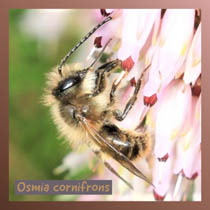
Osmia cornifrons -
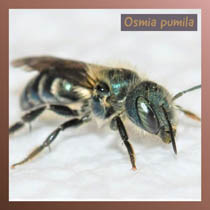
Osmia pumila -
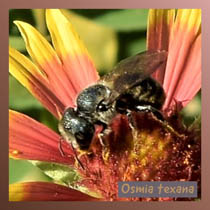
Osmia texana -
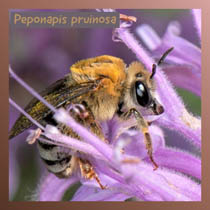
Peponapis pruinosa -

Ptilothrix bombiformis -
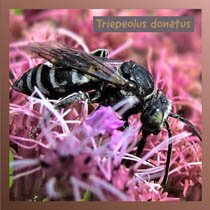
Triepeolus donatus -
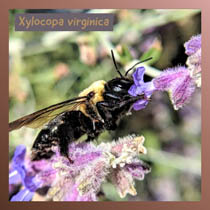
Xylocopa virginica

Bi-Colored Sweat Bee
Agapostemon virescens
** FUN FACT **
Agapostemon means "stamen-loving!"
Can you spot this bee?
The Bi-Colored Sweat Bee has a metallic green head and thorax. Its abdomen is black with white stripes. It is only about 2/5 inches long!
How/Where does this bee nest?
This bee is solitary (meaning it nests alone) but is gregarious (meaning it will nest near a lot of its fellow bees, each in their own nest) and is a ground nester.
- SHARP, S., & EATMAN, R. (2019). WILD BEE ID GUIDE - ROCKEFELLER STATE PARK. NYBEE-16DEC2019. HTTPS://WWW.SHARPEATMANGUIDES.COM/ROCKEFELLER-STATE-PARK-BEES-NEW-YORK
- WILSON, J. S., & CARRIL, O. J. M. (2015). THE BEES IN YOUR BACKYARD. AMSTERDAM UNIVERSITY PRESS
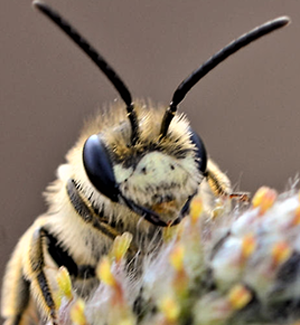
Yellow-Legged Miner Bee
Andrena cressoni
** FUN FACT**
Andrena means "buzzing insect!"
Can you spot this bee?
The Yellow-Legged Miner Bee has bands on pale hair on its abdomen. The males of this species have a yellow "mask" on their face!
- SHARP, S., & EATMAN, R. (2019). WILD BEE ID GUIDE - ROCKEFELLER STATE PARK. NYBEE-16DEC2019. HTTPS://WWW.SHARPEATMANGUIDES.COM/ROCKEFELLER-STATE-PARK-BEES-NEW-YORK
- WILSON, J. S., & CARRIL, O. J. M. (2015). THE BEES IN YOUR BACKYARD. AMSTERDAM UNIVERSITY PRESS

Maple Miner Bee
Andrena fenningeri
** FUN FACT **
Andrena means "buzzing insect!"

Neighborly Miner Bee
Andrena vicina
Andrena means "buzzing insect!"
This bee was named "Neighborly" because it has adapted to live in more developed areas such as towns and cities.
Can you spot this bee?
The Neighborly Miner Bee females have black heads and abdomens, thorax with light brown hairs, and a segment of white hair on the top segment in their front and middle legs. The males have dark abdomens and pale hair on their face and thorax.
These bees are only 2/5-1/2 inches long!
How/Where does this bee nest?
This bee is solitary (meaning it nests alone) and is a ground nester.
- SHARP, S., & EATMAN, R. (2019). WILD BEE ID GUIDE - ROCKEFELLER STATE PARK. NYBEE-16DEC2019. HTTPS://WWW.SHARPEATMANGUIDES.COM/ROCKEFELLER-STATE-PARK-BEES-NEW-YORK
- WILSON, J. S., & CARRIL, O. J. M. (2015). THE BEES IN YOUR BACKYARD. AMSTERDAM UNIVERSITY PRESS
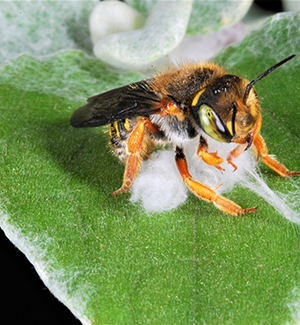
European Wool Carder Bee
Anthidium manicatum
Anthidium means "little flower visitor!"
** FUN FACT **
These bees are called "wool carder" bees because they line their nests with plant hairs scraped from plants like lamb's ear!
These bees are non-native to the United States. They were accidently introduced mid-20th century and first spotted along the east coast in the 1960s.
Can you spot this bee?
The European Wool Carder Bee has a wide body and is black with vivid yellow marking. These bees are ½-1" long.
How/Where does this bee nest?
This bee is solitary (meaning it nests alone) and is nests in pre-existing cavities.
- SHARP, S., & EATMAN, R. (2019). WILD BEE ID GUIDE - ROCKEFELLER STATE PARK. NYBEE-16DEC2019. HTTPS://WWW.SHARPEATMANGUIDES.COM/ROCKEFELLER-STATE-PARK-BEES-NEW-YORK
- WILSON, J. S., & CARRIL, O. J. M. (2015). THE BEES IN YOUR BACKYARD. AMSTERDAM UNIVERSITY PRESS

Red-Tipped Wood-Digger Bee
Athophora terminalis
Anthophora means "flower-bearer!"
This bee practices "buzz pollination." It uses its wing muscles (without flapping its wings) to vibrate the blooms, shaking them
until the flowers release the nutritious pollen.
This video has information and examples of Buzz Pollination!
"A short introduction to buzz pollination with a simple demonstration of what is happening that you can create yourself with a few readily available items."
--Royal Botanic Garden Edinburgh
Can you spot this bee?
The Red-Tipped Wood-Digger Bee is generally robust and furry in appearance. Both the head and thorax are covered in fluffs of pale hair. The abdomen is pitch black with defined white bands of hair. These bees have dark legs, red feet, and green eyes. They are ½" long.
How/Where does this bee nest?
This bee is solitary (meaning it nests alone) and nest is pithy stems or rotted wood.
- SHARP, S., & EATMAN, R. (2019). WILD BEE ID GUIDE - ROCKEFELLER STATE PARK. NYBEE-16DEC2019. HTTPS://WWW.SHARPEATMANGUIDES.COM/ROCKEFELLER-STATE-PARK-BEES-NEW-YORK
- WILSON, J. S., & CARRIL, O. J. M. (2015). THE BEES IN YOUR BACKYARD. AMSTERDAM UNIVERSITY PRESS

European Honey Bee
Apis mellifera
Apis means "swarm" and mellifera means "honey-bearing!"
** FUN FACT **
These bees are non-native to the United States. They were introduced by the Pilgrims over 350 years ago but are originally from tropical Africa!
Approximately 30% of U.S. food production (worth about 15 BILLION) depends on honey bee pollination!
Can you spot this bee?
The European Honey Bee has a brown abdomen with black stripes and has black eyes. These bees are 3/8-5/8" long.
How/Where does this bee nest?
This bee is social (meaning it nests in a colony and shares the workload). In addition to kept hives, these bees prefer to nest in dark, enclosed spaces.
- SHARP, S., & EATMAN, R. (2019). WILD BEE ID GUIDE - ROCKEFELLER STATE PARK. NYBEE-16DEC2019. HTTPS://WWW.SHARPEATMANGUIDES.COM/ROCKEFELLER-STATE-PARK-BEES-NEW-YORK
- WILSON, J. S., & CARRIL, O. J. M. (2015). THE BEES IN YOUR BACKYARD. AMSTERDAM UNIVERSITY PRESS
- Shepard, B. M., Farnworth, E. G., Williams, D., Bisner, A., & Lowcountry Biodiversity Foundation. (2019). Insect Pollinators of the South Carolina and Georgia Lowcountry. Lowcountry Biodiversity Foundation.

Pure Golden-Green Sweat Bee
Augochlora pura
** FUN FACT **
This bee can produce up to 3 generations in one year!
Can you spot this bee?
The Pure Golden-Green Sweat Bee has a brilliant green head that is roughly hexagonal in shape. This bee is approximately 3/10" in length.
How/Where does this bee nest?
This bee is solitary (meaning it nests alone) and nests under the bark of rotting trees.
- SHARP, S., & EATMAN, R. (2019). WILD BEE ID GUIDE - ROCKEFELLER STATE PARK. NYBEE-16DEC2019. HTTPS://WWW.SHARPEATMANGUIDES.COM/ROCKEFELLER-STATE-PARK-BEES-NEW-YORK
- Shepard, B. M., Farnworth, E. G., Williams, D., Bisner, A., & Lowcountry Biodiversity Foundation. (2019). Insect Pollinators of the South Carolina and Georgia Lowcountry. Lowcountry Biodiversity Foundation.

Golden Sweat Bee
Augochlorella aurata
Can you spot this bee?
The Golden Sweat Bee ranges from pale-green to yellow-green to coppery-green. It is only 1/5" in length!
How/Where does this bee nest?
This bee is solitary (meaning it nests alone) but is gregarious (meaning it will nest near a lot of its fellow bees, each in
their own nest) and is a ground nester.
- SHARP, S., & EATMAN, R. (2019). WILD BEE ID GUIDE - ROCKEFELLER STATE PARK. NYBEE-16DEC2019. HTTPS://WWW.SHARPEATMANGUIDES.COM/ROCKEFELLER-STATE-PARK-BEES-NEW-YORK

Metallic Epauletted Sweat Bee
Augochloropsis metallica
Can you spot this bee?
The Metallic Epauletted Sweat Bee has a brilliant yellow-green body, green eyes ad dark antennae. This bee is only 3/10" long.
How/Where does this bee nest?
This bee is solitary (meaning it nests alone) but is gregarious (meaning it will nest near a lot of its fellow bees, each in their own nest) and is a ground nester.
- SHARP, S., & EATMAN, R. (2019). WILD BEE ID GUIDE - ROCKEFELLER STATE PARK. NYBEE-16DEC2019. HTTPS://WWW.SHARPEATMANGUIDES.COM/ROCKEFELLER-STATE-PARK-BEES-NEW-YORK

Two-Spotted Bumble Bee
Bombus bimaculatus
** FUN FACT**
Bombus means "a buzzing sound!"
** BUZZ POLLINATOR **
This bee practices "buzz pollination." It uses its wing muscles (without flapping its wings) to vibrate the blooms, shaking them until the flowers release the
nutritious pollen.
This video has information and examples of Buzz Pollination!
"A short introduction to buzz pollination with a simple demonstration of what is happening that you can create yourself with a few readily available items.""
--Royal Botanic Garden Edinburgh
Can you spot this bee?
The Two-Spotted Bumble Bee has a black spot on the thorax between the
wings, and a wide plump body with thick flush hair. This bee ranges from
2/5-4/5" in length.
How/Where does this bee nest?
This bee is social (meaning it nests in a colony) and is a ground nester.
- SHARP, S., & EATMAN, R. (2019). WILD BEE ID GUIDE - ROCKEFELLER STATE PARK. NYBEE-16DEC2019. HTTPS://WWW.SHARPEATMANGUIDES.COM/ROCKEFELLER-STATE-PARK-BEES-NEW-YORK
- WILSON, J. S., & CARRIL, O. J. M. (2015). THE BEES IN YOUR BACKYARD. AMSTERDAM UNIVERSITY PRESS
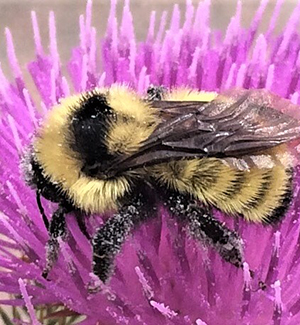
Golden Northern Bumble Bee
Bombus fervidis
** FUN FACT **
Bombus means "a buzzing
sound!""
** BUZZ POLLINATOR **
This bee practices "buzz pollination." It
uses its wing muscles (without flapping its
wings) to vibrate the blooms, shaking
them until the flowers release the
nutritious pollen.
This video has information and examples
of Buzz Pollination!
"A short introduction to buzz pollination with a simple
demonstration of what is happening that you can create
yourself with a few readily available items."
--Royal Botanic Garden Edinburgh
Can you spot this bee?
The Golden Northern Bumble Bee is predominantly yellow with a black bar over the thorax. It has a black head and black legs. This bee is 3/5-4/5: in length.
How/Where does this bee nest?
This bee is social (meaning it nests in a colony) and is an above-ground nester, with combs hidden under debris such as grass or bird feathers.
- SHARP, S., & EATMAN, R. (2019). WILD BEE ID GUIDE - ROCKEFELLER STATE PARK. NYBEE-16DEC2019. HTTPS://WWW.SHARPEATMANGUIDES.COM/ROCKEFELLER-STATE-PARK-BEES-NEW-YORK
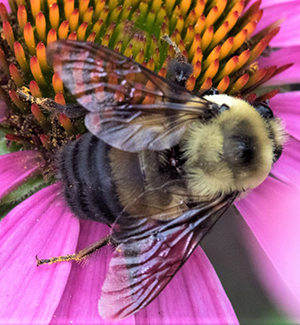
Brown-Belted Bumble Bee
Bombus griseocollis
** FUN FACT **
Bombus means "a buzzing sound!"
** BUZZ POLLINATOR **
This bee practices "buzz pollination." It
uses its wing muscles (without flapping its
wings) to vibrate the blooms, shaking
them until the flowers release the
nutritious pollen.
This video has information and examples
of Buzz Pollination!
"A short introduction to buzz pollination with a simple
demonstration of what is happening that you can create
yourself with a few readily available items."
--Royal Botanic Garden Edinburgh
Can you spot this bee?
The Brown-Belted Bumble Bee has trim fur. A belt of brown hair is located near the front of the black abdomen. It ranges 2/5-9/10" in length.
How/Where does this bee nest?
This bee is social (meaning it nests in a colony) and is a ground nester.
- SHARP, S., & EATMAN, R. (2019). WILD BEE ID GUIDE - ROCKEFELLER STATE PARK. NYBEE-16DEC2019. HTTPS://WWW.SHARPEATMANGUIDES.COM/ROCKEFELLER-STATE-PARK-BEES-NEW-YORK
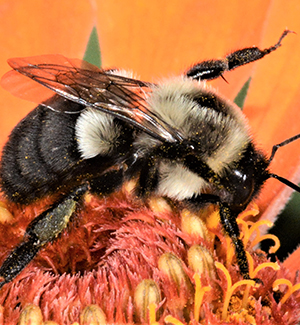
Common Eastern Bumble Bee
Bombus impatiens
** FUN FACT **
Bombus means "a buzzing
sound!"
** BUZZ POLLINATOR **
This bee practices "buzz pollination." It uses its wing muscles
(without flapping its wings) to vibrate the blooms, shaking them
until the flowers release the nutritious pollen.
This video has information and examples
of Buzz Pollination!
"A short introduction to buzz pollination with a simple
demonstration of what is happening that you can create
yourself with a few readily available items."
--Royal Botanic Garden Edinburgh
Can you spot this bee?
The Common Easter Bumble Bee has a black and gold furry body with a black spot on the thorax. The head, eyes, antennae, and legs are all black. The abdomen is striped with black hair.
How/Where does this bee nest?
This bee is social (meaning it nests in a colony) and is a ground nester.
- SHARP, S., & EATMAN, R. (2019). WILD BEE ID GUIDE - ROCKEFELLER STATE PARK. NYBEE-16DEC2019. HTTPS://WWW.SHARPEATMANGUIDES.COM/ROCKEFELLER-STATE-PARK-BEES-NEW-YORK
- WILSON, J. S., & CARRIL, O. J. M. (2015). THE BEES IN YOUR BACKYARD. AMSTERDAM UNIVERSITY PRESS

Half-Black Bumble Bee
Bombus vagans
** FUN FACT **
Bombus means "a buzzing sound!"
The male Half-Black Bumble Bee will grab other bumble bees from behind and YANK them off a flower to protect its food source!
** BUZZ POLLINATOR **
This bee practices "buzz pollination." It uses its wing muscles (without
flapping its wings) to vibrate the blooms, shaking them until the
flowers release the nutritious pollen.
This video has information and examples
of Buzz Pollination!
"A short introduction to buzz pollination with a simple
demonstration of what is happening that you can create
yourself with a few readily available items."
--Royal Botanic Garden Edinburgh
Can you spot this bee?
The Half-Black Bumble Bee is yellow on top and black on the bottom. It has long, shaggy looking hairs and ranges 3/5-4/5" long.
How/Where does this bee nest?
This bee is social (meaning it nests in a colony) and is a ground nester.
- SHARP, S., & EATMAN, R. (2019). WILD BEE ID GUIDE - ROCKEFELLER STATE PARK. NYBEE-16DEC2019. HTTPS://WWW.SHARPEATMANGUIDES.COM/ROCKEFELLER-STATE-PARK-BEES-NEW-YORK

Eastern Miner Bee
Calliopsis andreniformis
** FUN FACT **
Calliopsis means
"beautiful!"
The female of this species secretes an oily substance that she places on the walls of the egg chambers and nectar/pollen stores. It acts as WATERPROOFING!
Can you spot this bee?
The Eastern Miner Bee has a dark thorax, and a dark abdomen with bands of pale hair. IT has bright green eyes and is robustly shaped. The male has a yellow face and legs. This bee is approximately ½" long.
How/Where does this bee nest?
This bee is social (meaning it nests in a colony) and is a ground nester.
- SHARP, S., & EATMAN, R. (2019). WILD BEE ID GUIDE - ROCKEFELLER STATE PARK. NYBEE-16DEC2019. HTTPS://WWW.SHARPEATMANGUIDES.COM/ROCKEFELLER-STATE-PARK-BEES-NEW-YORK
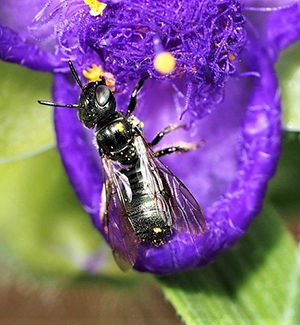
Doubled Carpenter Bee
Ceratina dupla
** FUN FACT**
This species nests in the same twigs as the Mi'kmaq Carpenter Bee, but they nest early in the season - which prevents the species competing for nesting space!
This bee is solitary (meaning it nests alone) and prefers to nest in dead plant stems.
- WILSON, J. S., & CARRIL, O. J. M. (2015). THE BEES IN YOUR BACKYARD. AMSTERDAM UNIVERSITY PRESS

Mi'kmaq Little Carpenter Bee
Ceratina mikmaqi
**FUN FACT**
This species nests in the same twigs as the Doubled Carpenter Bee, but they
nest late in the season - which prevents the species competing for nesting
space!
How/Where does this bee nest?
This bee is solitary (meaning it nests alone) and prefers to nest in dead plant stems.
- WILSON, J. S., & CARRIL, O. J. M. (2015). THE BEES IN YOUR BACKYARD. AMSTERDAM UNIVERSITY PRESS

Nimble Carpenter Bee
Ceratina strenua
** FUN FACT**
The female of this species is "nest loyal" - which means
she cares for her eggs from the moment of laying them
until they have reached adulthood. This is very rare
in bee species!
Can you spot this bee?
The Nimble Carpenter Bee is nearly hairless and ranges 1/6-1/5" in length.
How/Where does this bee nest?
This bee is solitary (meaning it nests alone) and prefers to nest in dead
wood of dead plant stems.
- SHARP, S., & EATMAN, R. (2019). WILD BEE ID GUIDE - ROCKEFELLER STATE PARK. NYBEE-16DEC2019. HTTPS://WWW.SHARPEATMANGUIDES.COM/ROCKEFELLER-STATE-PARK-BEES-NEW-YORK
- Shepard, B. M., Farnworth, E. G., Williams, D., Bisner, A., & Lowcountry Biodiversity Foundation. (2019). Insect Pollinators of the South Carolina and Georgia Lowcountry. Lowcountry Biodiversity Foundation.

Sad Cuckoo Leafcutter Bee
Coelioxys moesta
** FUN FACT**
Coelioxys means "sharp belly!"
This bee species preys upon the Relative Leafcutter Bee - which is ALSO found at Flight 93 National Memorial. Cuckoo bees are proof of a healthy and diverse ecosystem.
Can you spot this bee?
The Sad Cuckoo Leafcutter Bee has a black thorax, red legs and a very pointy abdomen.
This bee also pollinates these items you may find on your dinner table!
This bee does NOT POLLINATE flowers or gather pollen! This is because it uses the work of other bees gathering pollen to feed its eggs. It does still visit blooms for nectar to eat!
How/Where does this bee nest?
This bee is a cleoparasite (meaning it lays its eggs in another bee's nest). It uses its pointy abdomen to break a hole in the host bee's nest, then lays its own egg in the egg chamber with the host egg and food supply. The parasite egg hatches almost immediately, and the larvae kills the host larvae or egg. It then eats the pollen store given to the host egg, becomes an adult, and continues this process.
- WILSON, J. S., & CARRIL, O. J. M. (2015). THE BEES IN YOUR BACKYARD. AMSTERDAM UNIVERSITY PRESS

Red-Footed Cuckoo Leafcutter Bee
Coelioxys rufitarsis
** FUN FACT**
Coelioxys means "sharp belly!"
This bee species preys upon other species of leafcutter bee-12 species of which are ALSO found at Flight 93 National Memorial. Cuckoo bees are proof of a healthy and diverse ecosystem.
This bee also pollinates these items you may find on your dinner table!
This bee does NOT POLLINATE flowers or gather pollen! This is
because it uses the work of other bees gathering pollen to feed its
eggs. It does still visit blooms for nectar to eat!
How/Where does this bee nest?
This bee is a cleoparasite (meaning it lays its eggs in another bee's nest). It uses its pointy abdomen to break a hole in the host bee's nest, then lays its
own egg in the egg chamber with the host egg and food supply. The parasite egg hatches almost immediately, and the larvae kills the host larvae or egg.
It then eats the pollen store given to the host egg, becomes an adult, and continues this process.
- WILSON, J. S., & CARRIL, O. J. M. (2015). THE BEES IN YOUR BACKYARD. AMSTERDAM UNIVERSITY PRESS

Armed Cellophane Bee
Colletes simulans
** FUN FACT**
Colletes means "one who glues!"
This species lines nests with a waterproofing substance
they secrete which hardens and forms a cellophane-like
material!
Can you spot this bee?
This bee has spines of both sides and the front of the thorax. It is bulky in appearance and has well-defined white hair bands circling its abdomen. It ranges 1/3-2/5" in length.
How/Where does this bee nest?
This bee is solitary (meaning it nests alone) but is gregarious (meaning it will nest near a lot of its fellow bees, each in their own nest) and is a ground nester.
- SHARP, S., & EATMAN, R. (2019). WILD BEE ID GUIDE - ROCKEFELLER STATE PARK. NYBEE-16DEC2019. HTTPS://WWW.SHARPEATMANGUIDES.COM/ROCKEFELLER-STATE-PARK-BEES-NEW-YORK
- WILSON, J. S., & CARRIL, O. J. M. (2015). THE BEES IN YOUR BACKYARD. AMSTERDAM UNIVERSITY PRESS

Hooked Long-Horn Bee
Eucera hamata
** FUN FACT**
Eucera mean "well-horned!"
The males of this species sleep clutching onto flower stems or onto twigs!
Can you spot this bee?
The Hooked Long-Horn Bee is generally large and hairy.
How/Where does this bee nest?
This bee is solitary (meaning it nests alone) and prefers to nest in the ground
- WILSON, J. S., & CARRIL, O. J. M. (2015). THE BEES IN YOUR BACKYARD. AMSTERDAM UNIVERSITY PRESS

Confusing Sweat Bee
Halictus confusus
** FUN FACT**
Halictus means "gathering or collecting!"
Can you spot this bee?
The Confusing Sweat Bee has a thorax that is greenish/bluish/brassy. The abdomen has pale stripes and the legs are vivid yellow and orange. The length range is 1/5-1/3".
How/Where does this bee nest?
This bee is solitary (meaning it nests alone) and is a ground nester.
- SHARP, S., & EATMAN, R. (2019). WILD BEE ID GUIDE - ROCKEFELLER STATE PARK. NYBEE-16DEC2019. HTTPS://WWW.SHARPEATMANGUIDES.COM/ROCKEFELLER-STATE-PARK-BEES-NEW-YORK

Ligated Gregarious Sweat Bee
Halictus ligatus
** FUN FACT**
Halictus means "gathering or collecting!"
These bees are SO SMALL, they must be careful when collecting nectar and/or pollen from milkweed. If they fall in, they can get trapped and die!
Can you spot this bee?
The Ligated Gregarious Sweat Bee has a dark brown or black abdomen with pale stripes of hair. The jaw is sharply defined. It ranges in length 1/5-1/3".
How/Where does this bee nest?
This bee is solitary (meaning it nests alone) but is gregarious (meaning it will nest near a lot of its fellow bees, each in their own nest) and is a ground nester.
- SHARP, S., & EATMAN, R. (2019). WILD BEE ID GUIDE - ROCKEFELLER STATE PARK. NYBEE-16DEC2019. HTTPS://WWW.SHARPEATMANGUIDES.COM/ROCKEFELLER-STATE-PARK-BEES-NEW-YORK

Orange-Legged Sweat Bee
Halictus rubicundis
** FUN FACT**
Halictus means "gathering or collecting!" The climate affects this species nesting behavior! In a warmer climate, they are social nesters and share work. In a cooler climate, they are solitary nesters!
Can you spot this bee?
The Orange-Legged Sweat Bee has a dark brown abdomen with well-defined white bands of hair. Females have reddish-orange legs and males have yellow legs. This species is 2/5" in length.
How/Where does this bee nest?
This bee is solitary (meaning it nests alone) but is gregarious (meaning it will nest near a lot of its fellow bees, each in their own nest) and is a ground nester.
- SHARP, S., & EATMAN, R. (2019). WILD BEE ID GUIDE - ROCKEFELLER STATE PARK. NYBEE-16DEC2019. HTTPS://WWW.SHARPEATMANGUIDES.COM/ROCKEFELLER-STATE-PARK-BEES-NEW-YORK
- WILSON, J. S., & CARRIL, O. J. M. (2015). THE BEES IN YOUR BACKYARD. AMSTERDAM UNIVERSITY PRESS

Hairy-Faced Summer Mason Bee
Hoplitis pilosifrons
** FUN FACT**
Hoplitis species were names after the Hoplites who were Greek citizen soldiers more than 3,000 years ago! These soldiers carried distinctive shields and spear. These bees bear NO RESEMBLANCE to the soldiers!
Can you spot this bee?
The Hairy-Faced Summer Mason Bee has needle-thin hooks on the ends of its antennae.
How/Where does this bee nest?
This bee is solitary (meaning it nests alone).
- WILSON, J. S., & CARRIL, O. J. M. (2015). THE BEES IN YOUR BACKYARD. AMSTERDAM UNIVERSITY PRESS
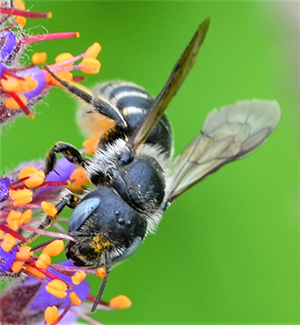
Robber Mason Bee
Hoplitis spoliata
** FUN FACT**
Hoplitis species were names after the Hoplites who were Greek citizen soldiers more than 3,000 years ago! These soldiers carried distinctive shields and spear. These bees bear NO RESEMBLANCE to the soldiers!
Can you spot this bee?
The Robber Mason Bee has needle-thin hooks on the ends of its antennae.
How/Where does this bee nest?
This bee is solitary (meaning it nests alone).
- WILSON, J. S., & CARRIL, O. J. M. (2015). THE BEES IN YOUR BACKYARD. AMSTERDAM UNIVERSITY PRESS

Annulate Masked Bee
Hylaeus annulatus
** FUN FACT**
Hylaeus means "of the woods!"
The females of Hylaeus species secrete an antifungal and antibacterial chemical from the base of the mandibles that has a citrus-like scent. It is used in building the nests.
Can you spot this bee?
The Annulate Masked Bee has face markings that extend up beside the eyes and are either yellow or white. This species has very little hair and no metallic shine. It is narrow waisted (similar to a wasp).
How/Where does this bee nest?
This bee is solitary (meaning it nests alone). It nests in woody materials with premade holes.
- WILSON, J. S., & CARRIL, O. J. M. (2015). THE BEES IN YOUR BACKYARD. AMSTERDAM UNIVERSITY PRESS
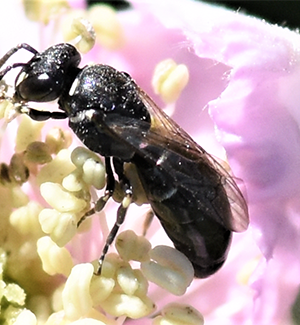
Illinois Masked Bee
Hylaeus illinoisensis
** FUN FACT**
Hylaeus means "of the woods!"
The females of Hylaeus species secrete an antifungal and antibacterial chemical from the base of the mandibles that has a citrus-like scent. It is used in building the nests.
Can you spot this bee?
The Illinois Masked Bee has face markings that extend up beside the eyes and are either yellow or white. This species has very little hair and no metallic shine. It is narrow waisted (similar to a wasp).
How/Where does this bee nest?
This bee is solitary (meaning it nests alone). It nests in woody materials with premade holes.
- WILSON, J. S., & CARRIL, O. J. M. (2015). THE BEES IN YOUR BACKYARD. AMSTERDAM UNIVERSITY PRESS

Mesilla Valley Masked Bee
Hylaeus mesillae
** FUN FACT**
Hylaeus means "of the woods!"
The females of Hylaeus species secrete an antifungal and antibacterial chemical from the base of the mandibles that has a citrus-like scent. It is used in building the nests.
Can you spot this bee?
The Mesilla Valley Masked Bee has face markings that extend up beside the eyes and are either yellow or white. This species has very little hair and no metallic shine. It is narrow waisted (similar to a wasp).
How/Where does this bee nest?
This bee is solitary (meaning it nests alone). It nests in woody materials with premade holes.
- WILSON, J. S., & CARRIL, O. J. M. (2015). THE BEES IN YOUR BACKYARD. AMSTERDAM UNIVERSITY PRESS

Modest Masked Bee
Hylaeus modestus
** FUN FACT**
Hylaeus means "of the woods!"
The females of Hylaeus species secrete an antifungal and antibacterial chemical from the base of the mandibles that has a citrus-like scent. It is used in building the nests.
Can you spot this bee?
The Mesilla Valley Masked Bee has face markings that extend up beside the eyes and are either yellow or white. This species has very little hair and no metallic shine. It is narrow waisted (similar to a wasp). It has yellow markings on all six (6) legs and a collar of yellow lining the front of the thorax. Females have two (2) yellow triangles on the face. This species is 2/5" in length.
How/Where does this bee nest?
This bee is solitary (meaning it nests alone). It nests in woody materials with premade holes.
- WILSON, J. S., & CARRIL, O. J. M. (2015). THE BEES IN YOUR BACKYARD. AMSTERDAM UNIVERSITY PRESS
.jpg)
Dark Metallic Sweat Bee
Lasioglossum (Dialictus) sp.
** FUN FACT**
These species are the
smallest bees found in the
United States!
Can you spot this bee?
The Dark Metallic Sweat Bee has a dark green/bronze/blue sheen.
How/Where does this bee nest?
This bee is solitary (meaning it nests alone) and is a ground nester.
- SHARP, S., & EATMAN, R. (2019). WILD BEE ID GUIDE - ROCKEFELLER STATE PARK. NYBEE-16DEC2019. HTTPS://WWW.SHARPEATMANGUIDES.COM/ROCKEFELLER-STATE-PARK-BEES-NEW-YORK
- WILSON, J. S., & CARRIL, O. J. M. (2015). THE BEES IN YOUR BACKYARD. AMSTERDAM UNIVERSITY PRESS
.jpg)
Dark Striped Sweat Bee
Lasioglossum (Evylaeus) sp.
** FUN FACT**
These species build a turret of mud around the top of their nest entrances!
Can you spot this bee?
The Dark Striped Sweat Bee is dark and lacks metallic coloration. It is long and slender, almost ant-like in appearance. It ranges in length 1/6-1/4".
How/Where does this bee nest?
This bee is solitary (meaning it nests alone) and is a ground nester.
- SHARP, S., & EATMAN, R. (2019). WILD BEE ID GUIDE - ROCKEFELLER STATE PARK. NYBEE-16DEC2019. HTTPS://WWW.SHARPEATMANGUIDES.COM/ROCKEFELLER-STATE-PARK-BEES-NEW-YORK
- WILSON, J. S., & CARRIL, O. J. M. (2015). THE BEES IN YOUR BACKYARD. AMSTERDAM UNIVERSITY PRESS

Megachile Addenda Leafcutter Bee
Megachile addenda
** FUN FACT**
Megachile means "large-lipped!"
The female of the species chews the leaf around her feet, then free-falls with the piece of leaf until she can fly. She takes it back to her nest to create a leaf capsule for each egg. Each egg capsule takes 1.5- 3 hours to construct and provision!
-Video by Erica Seigel
Can you spot this bee?
The Megachile Addenda Leafcutter Bee is large with a thick, dark head and body. It has well-defined bands of pale hair on its black abdomen. It has dark, olive-green eyes and distinctive mandibles. It ranges 2/5-1/2" in length.
How/Where does this bee nest?
This bee is solitary (meaning it nests alone) but is gregarious (meaning it will nest near a lot of its fellow bees, each in their own nest) and is a ground nester.
- SHARP, S., & EATMAN, R. (2019). WILD BEE ID GUIDE - ROCKEFELLER STATE PARK. NYBEE-16DEC2019. HTTPS://WWW.SHARPEATMANGUIDES.COM/ROCKEFELLER-STATE-PARK-BEES-NEW-YORK
- WILSON, J. S., & CARRIL, O. J. M. (2015). THE BEES IN YOUR BACKYARD. AMSTERDAM UNIVERSITY PRESS

Bellflower Resin Bee
Megachile campanulae
** FUN FACT**
Megachile means "largelipped!"
The female of the species collects sticky plant and tree resins to seal egg chambers closed inside the nest!
Can you spot this bee?
The Bellflower Resin Bee has a long, black abdomen with pale hair that is pitted with small indentations and has distinctive mandibles. It ranges in length 3/10-2/5".
How/Where does this bee nest? This bee is solitary (meaning it nests alone) and nests in hollow stems or tunnels left in wood by other insects.
- SHARP, S., & EATMAN, R. (2019). WILD BEE ID GUIDE - ROCKEFELLER STATE PARK. NYBEE-16DEC2019. HTTPS://WWW.SHARPEATMANGUIDES.COM/ROCKEFELLER-STATE-PARK-BEES-NEW-YORK
- WILSON, J. S., & CARRIL, O. J. M. (2015). THE BEES IN YOUR BACKYARD. AMSTERDAM UNIVERSITY PRESS

Frigid Leafcutter Bee
Megachile frigida
** FUN FACT**
Megachile means "large-lipped!"
The male of the species are exceptionally loud "buzzers" and are very conspicuous when in a field around you!
The female of the species chews the leaf around her feet, then free-falls with the piece of leaf until she can fly. She takes it back to her nest to create
a leaf capsule for each egg. Each egg capsule takes 1.5-3 hours to construct
and provision!
This video shows how the bee chews through the leaf!
-Video by Erica Seigel
Can you spot this bee?
The Frigid Leafcutter Bee is 2/5-3/5" in length. The female has bright orange scopa hairs under the abdomen for pollen collection. Males have enlarged, pale front legs with long hairs as well as orange and black markings.
How/Where does this bee nest?
This bee is solitary (meaning it nests alone) and nests in hollow stems or tunnels left in wood by other insects.
- SHARP, S., & EATMAN, R. (2019). WILD BEE ID GUIDE - ROCKEFELLER STATE PARK. NYBEE-16DEC2019. HTTPS://WWW.SHARPEATMANGUIDES.COM/ROCKEFELLER-STATE-PARK-BEES-NEW-YORK

Small-Handed Leafcutter Bee
Megachile gemula
** FUN FACT**
Megachile means "large-lipped!"
The Small-Handed Leafcutter Bee earned its name because its tari (or "toes") are short and slender!
The female of the species chews the leaf around her feet, then free-falls with the piece of leaf until she can fly. She takes it back to her nest to create a leaf capsule for each egg. Each egg capsule takes 1.5-3 hours to construct and provision!
This video shows how the bee chews through the leaf!
-Video by Erica Seigel
Can you spot this bee?
The Small-Handed Leafcutter Bee is 1/3-1/2" in length. The species has a black head, body, legs, and antennae. It has dark eyes.
How/Where does this bee nest?
This bee is solitary (meaning it nests alone) and nests in hollow stems or tunnels left in wood by other insects.
- SHARP, S., & EATMAN, R. (2019). WILD BEE ID GUIDE - ROCKEFELLER STATE PARK. NYBEE-16DEC2019. HTTPS://WWW.SHARPEATMANGUIDES.COM/ROCKEFELLER-STATE-PARK-BEES-NEW-YORK

Unarmed Leafcutter Bee
Megachile inermis
** FUN FACT**
Megachile means "large-lipped!"
The female of the species chews the leaf around her feet, then free-falls with the piece of leaf until she can fly. She takes it back to her nest to create a leaf capsule for each egg. Each egg capsule takes 1.5-3 hours to
construct and provision!
This video shows how the bee chews through the leaf!
-Video by Erica Seigel

Broad-Handed Leafcutter Bee
Megachile latimadnus
** FUN FACT**
Megachile means "large-lipped!"
The female of the species chews the leaf around her feet, then free-falls with the piece of leaf until she can fly. She takes it back to her nest to create a leaf capsule for each egg. Each egg capsule takes 1.5-3 hours to construct and provision!
This video shows how the bee chews through the leaf!
-Video by Erica Seigel
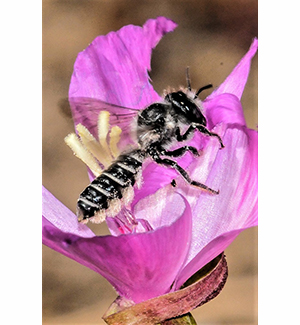
Silver-Tailed Petal-Cutter Bee
Megachile montivaga
** FUN FACT**
Megachile means "large-lipped!"
This species uses FLOWERS, not leaves, to line the nest! It is very particular about the flower petals: they must be thin and delicate with a wide surface. Farewell-to-Spring and Evening Primrose are a favorite.
This video shows a petal-cutting bee cutting through a rose petal!
- Video by Aaron
Can you spot this bee?
The Silver-Tailed Petal-Cutter Bee has a slender abdomen with five (5) white bands of hair. The mandibles are both block and distinctive. This species ranges in length 2/5-1/2".
How/Where does this bee nest?
This bee is solitary (meaning it nests alone) and nests in hollow stems or tunnels left in wood by other insects.
- SHARP, S., & EATMAN, R. (2019). WILD BEE ID GUIDE - ROCKEFELLER STATE PARK. NYBEE-16DEC2019. HTTPS://WWW.SHARPEATMANGUIDES.COM/ROCKEFELLER-STATE-PARK-BEES-NEW-YORK
- WILSON, J. S., & CARRIL, O. J. M. (2015). THE BEES IN YOUR BACKYARD. AMSTERDAM UNIVERSITY PRESS

Blueberry Leafcutter Bee
Megachile mucida
** FUN FACT**
Megachile means "large-lipped!"
The female of the species chews the leaf around her feet, then free-falls with the piece of leaf until she can fly. She takes it back to her nest to create a leaf capsule for each egg. Each egg capsule takes 1.5-3 hours to construct and provision!
This video shows how the bee chews through the leaf!
-Video by Erica Seigel
Can you spot this bee?
The Blueberry Leafcutter Bee is a robust, black bee with enlarged forelegs that have long white hairs. Not only does this species have distinctive mandibles, it also has green eyes and ranges in length 1/3-1/2".
How/Where does this bee nest?
This bee is solitary (meaning it nests alone) and nests in hollow stems or tunnels left in wood by other insects.
- SHARP, S., & EATMAN, R. (2019). WILD BEE ID GUIDE - ROCKEFELLER STATE PARK. NYBEE-16DEC2019. HTTPS://WWW.SHARPEATMANGUIDES.COM/ROCKEFELLER-STATE-PARK-BEES-NEW-YORK
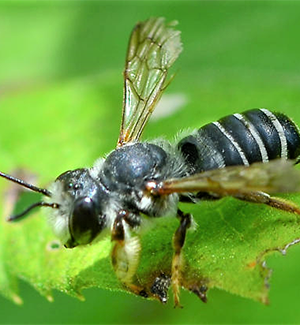
Pugnacious Leafcutter Bee
Megachile pugnata
** FUN FACT**
Megachile means "large-lipped!"
The female of the species chews the leaf around her feet,
then free-falls with the piece of leaf until she can fly. She
takes it back to her nest to create a leaf capsule for each egg.
Each egg capsule takes 1.5-3 hours to construct and provision!
This video shows how the bee chews through the leaf!
-Video by Erica Seigel
Can you spot this bee?
The Pugnacious Leafcutter Bee has a slender abdomen with well-defined stripes of pale hair. In additional to black heads, bodies, legs, and distinctive mandibles, the female of the species has yellow scopa hairs under the abdomen for pollen collection.
How/Where does this bee nest?
This bee is solitary (meaning it nests alone) and nests in hollow stems or tunnels left in wood by other insects.
- SHARP, S., & EATMAN, R. (2019). WILD BEE ID GUIDE - ROCKEFELLER STATE PARK. NYBEE-16DEC2019. HTTPS://WWW.SHARPEATMANGUIDES.COM/ROCKEFELLER-STATE-PARK-BEES-NEW-YORK

Relative Leafcutter Bee
Megachile relativa
** FUN FACT**
Megachile means "large-lipped!"
This species is preyed upon by the Sad Cuckoo Leafcutter Bee who breaks into its nest to lay its own eggs! And the Sad Cuckoo Leafcutter Bee is HERE at Flight 93 National Memorial!
** FUN FACT #2!**
The female of the species chews the leaf around her feet, then free-falls
with the piece of leaf until she can fly. She takes it back to her nest to create a leaf capsule for each egg. Each egg capsule takes 1.5-3 hours to construct and provision!
This video shows how the bee chews through the leaf!
-Video by Erica Seigel
Can you spot this bee?
The Relative Leafcutter Bee has a black abdomen with stripes of pale hair. In additional to distinctive mandibles, the female of the species has electric orange scopa hairs under the abdomen for pollen collection.
How/Where does this bee nest?
This bee is solitary (meaning it nests alone) and nests in hollow stems or tunnels left in wood by other insects.
- SHARP, S., & EATMAN, R. (2019). WILD BEE ID GUIDE - ROCKEFELLER STATE PARK. NYBEE-16DEC2019. HTTPS://WWW.SHARPEATMANGUIDES.COM/ROCKEFELLER-STATE-PARK-BEES-NEW-YORK

Sculpture Resin Bee
Megachile sculpturalis
** FUN FACT**
Megachile means "largelipped!"
This species is non-native to the United States. It was recently introduced from
the Far East.
Can you spot this bee?
The Sculpture Resin Bee is approximately 1" in length.
- WILSON, J. S., & CARRIL, O. J. M. (2015). THE BEES IN YOUR BACKYARD. AMSTERDAM UNIVERSITY PRESS
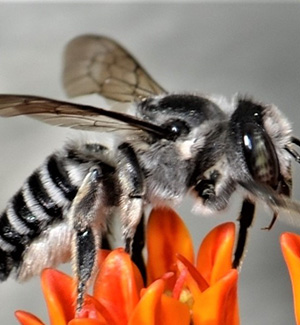
Texas Leafcutter Bee
Megachile texana
** FUN FACT**
Megachile means "large-lipped!"
The female of the species chews the leaf around her feet, then free-falls with the piece of leaf until she can fly. She takes it back to her nest to create a leaf capsule for each egg. Each egg capsule takes 1.5-3 hours to construct and provision!
This video shows how the bee chews through the leaf!
-Video by Erica Seigel
Can you spot this bee?
The Texas Leafcutter Bee is a dark bee with green eye and an abdomen handed with pale hair. The female has long, bright white scopa hair under the abdomen for collecting pollen. This species is 2/5-1/2" in length.
How/Where does this bee nest?
This bee is solitary (meaning it nests alone) and is a ground nester. It nests under rocks or other objects, digging shallow tunnels with individual egg chambers. It will occasionally reuse other insects' abandoned nests.
- SHARP, S., & EATMAN, R. (2019). WILD BEE ID GUIDE - ROCKEFELLER STATE PARK. NYBEE-16DEC2019. HTTPS://WWW.SHARPEATMANGUIDES.COM/ROCKEFELLER-STATE-PARK-BEES-NEW-YORK
- WILSON, J. S., & CARRIL, O. J. M. (2015). THE BEES IN YOUR BACKYARD. AMSTERDAM UNIVERSITY PRESS

Agile Long-Horn Bee
Melissodes agilis
** FUN FACT**
Melissodes means "bee like!"
The males of this species do not have or use a nest. They sleep overnight on flowerheads or clutching to plant stems!
Can you spot this bee?
The Agile Long-Horn Bee has a thorax covered with off-white hairs. The abdomen has pale hair bands. While females have blue-gray eyes, the males have green eyes and ling reddish antennae. This species range in length 1/3-3/5".
How/Where does this bee nest?
This bee is solitary (meaning it nests alone) but is gregarious (meaning it will nest near a lot of its fellow bees, each in their own nest) and is a ground nester. A female can build, provision and lay 1 egg per day. The nest contains two 90 degree turns to act as stoppers filled with dirt as protection for the eggs.
- SHARP, S., & EATMAN, R. (2019). WILD BEE ID GUIDE - ROCKEFELLER STATE PARK. NYBEE-16DEC2019. HTTPS://WWW.SHARPEATMANGUIDES.COM/ROCKEFELLER-STATE-PARK-BEES-NEW-YORK
- WILSON, J. S., & CARRIL, O. J. M. (2015). THE BEES IN YOUR BACKYARD. AMSTERDAM UNIVERSITY PRESS

Eastern Ironweed Long-Horn Bee
Melissodes denticulatus
** FUN FACT**
Melissodes means "bee like!"
This species are very fast flyers! They only alight on a blossom briefly and then they are gone again!
Can you spot this bee?
The Eastern Ironweed Long-Horn Bee has an overall grayish cast and is a robust bee. The black thorax is striped with bands of pale hair. Both males and females have bluish-gray eyes and males have long reddish antennae. This species range 1/3-2/5" in length.
How/Where does this bee nest?
This bee is solitary (meaning it nests alone) but is gregarious (meaning it will nest near a lot of its fellow bees, each in their own nest) and is a ground nester. A female can build, provision and lay 1 egg per day. The nest contains two 90 degree turns to act as stoppers filled with dirt as protection for the eggs.
- SHARP, S., & EATMAN, R. (2019). WILD BEE ID GUIDE - ROCKEFELLER STATE PARK. NYBEE-16DEC2019. HTTPS://WWW.SHARPEATMANGUIDES.COM/ROCKEFELLER-STATE-PARK-BEES-NEW-YORK

Thistle Long-Horn Bee
Melissodes desponsus
** FUN FACT**
Melissodes means "bee like!"
This species is preyed upon by the Thistle Long-Horn Cuckoo Bee who breaks into its nest to lay its own eggs! And the Thistle Long-Horn Cuckoo Bee is HERE at Flight 93 National Memorial!
Can you spot this bee?
The Agile Long-Horn Bee has a robust body with a black abdomen. The thorax has thick pale yellow-brown hair. This species has bushy pale gold scopa for pollen collection.
This bee is solitary (meaning it nests alone) but is gregarious (meaning it will nest near a lot of its fellow bees, each in their own nest) and is a ground nester. A female can build, provision and lay 1 egg per day. The nest contains two 90 degree turns to act as stoppers filled with dirt as protection for the eggs.
- SHARP, S., & EATMAN, R. (2019). WILD BEE ID GUIDE - ROCKEFELLER STATE PARK. NYBEE-16DEC2019. HTTPS://WWW.SHARPEATMANGUIDES.COM/ROCKEFELLER-STATE-PARK-BEES-NEW-YORK
- WILSON, J. S., & CARRIL, O. J. M. (2015). THE BEES IN YOUR BACKYARD. AMSTERDAM UNIVERSITY PRESS

Goldenrod Long-Horn Bee
Melissodes druriellus
** FUN FACT**
Melissodes means "bee like!"
This species doesn't emerge from
winterization in their nests until
OCTOBER!
How/Where does this bee nest?
This bee is solitary (meaning it nests alone) but is gregarious (meaning it will nest near a lot of its fellow bees, each in their own nest) and is a ground nester. A female can build, provision and lay 1 egg per day. The nest contains two 90 degree turns to act as stoppers filled with dirt as protection for the eggs.
- WILSON, J. S., & CARRIL, O. J. M. (2015). THE BEES IN YOUR BACKYARD. AMSTERDAM UNIVERSITY PRESS

Dark-Veined Long-Horn Bee
Melissodes trinodis
** FUN FACT**
Melissodes means "bee like!"
Can you spot this bee?
The Dark-Veined Long-Horn Bee has a robust body. With light brown or rust-colored hair on the thorax, this species is approximately ½" in length. The males have green eyes and the females have blue-green eyes.
How/Where does this bee nest?
This bee is solitary (meaning it nests alone) but is gregarious (meaning it will nest near a lot of its fellow bees, each in their own nest) and is a ground nester. A female can build, provision and lay 1 egg per day. The nest contains two 90 degree turns to act as stoppers filled with dirt as protection for the eggs.
- SHARP, S., & EATMAN, R. (2019). WILD BEE ID GUIDE - ROCKEFELLER STATE PARK. NYBEE-16DEC2019. HTTPS://WWW.SHARPEATMANGUIDES.COM/ROCKEFELLER-STATE-PARK-BEES-NEW-YORK

Melitta Americana Long-Horn Bee
Melitta americana
** FUN FACT**
This bee is classified as an OIL BEE.
In addition to collecting pollen, this species also collects floral oils from
the blossoms. It is mixed with the collected pollen to feed the larvae.

Nomada Cuckoo Bee
Nomada sp.
** FUN FACT**
Nomada means "wanderer!"
As a cleoparasite, this bee targets the following species located
at Flight 93 National Memorial.
Can you spot this bee?
Nomada Cuckoo Bees have striking yellow, black, white, and red marking. They frequently appear hairless as they have no scopa hairs (they do not collect pollen). These species are sleek and wasp-like in appearance. They range in length 1/10-3/5".
This bee also pollinates these items you may find on your dinner table!
NONE!
This bee does NOT POLLINATE flowers or gather pollen! This is because it uses
the work of other bees gathering pollen to feed its eggs. It does still visit
blooms for nectar to eat!
How/Where does this bee nest?
This bee is a cleoparasite (meaning it lays its eggs in another bee's nest). It uses its pointy abdomen to break a hole in the host bee's nest, then lays 1-4 of its own eggs in the egg chamber with the host egg and food supply. The parasite egg hatches almost immediately, and the larvae kills the host larvae or egg. It then eats the pollen store given to the host egg, becomes an adult, and continues this process.
- SHARP, S., & EATMAN, R. (2019). WILD BEE ID GUIDE - ROCKEFELLER STATE PARK. NYBEE-16DEC2019. HTTPS://WWW.SHARPEATMANGUIDES.COM/ROCKEFELLER-STATE-PARK-BEES-NEW-YORK
- WILSON, J. S., & CARRIL, O. J. M. (2015). THE BEES IN YOUR BACKYARD. AMSTERDAM UNIVERSITY PRESS

Maine Blueberry Bee
Osmia atriventris
** FUN FACTS**
Osmia means "odor!"
The females of this species use a lemony scent to mark the entrance to their nests! The Maine Blueberry Bee visits MORE FLOWERS per minute than the European
Honey Bee!
This species has been used COMMERCIALLY to pollinate BLUEBERRY CROPS for over 50 years!
Can you spot this bee?
The Maine Blueberry Bee is a vibrant metallic green, deep blue, or inky black. It has a small stout body with scopa hairs under the abdomen for pollen collection. The antennae have black nobs on the ends.
How/Where does this bee nest?
This bee is solitary (meaning it nests alone).
- SHARP, S., & EATMAN, R. (2019). WILD BEE ID GUIDE - ROCKEFELLER STATE PARK. NYBEE-16DEC2019. HTTPS://WWW.SHARPEATMANGUIDES.COM/ROCKEFELLER-STATE-PARK-BEES-NEW-YORK
- WILSON, J. S., & CARRIL, O. J. M. (2015). THE BEES IN YOUR BACKYARD. AMSTERDAM UNIVERSITY PRESS

Japanese Horn-Faced Bee
Osmia cornifrons
** FUN FACTS**
Osmia means "odor!"
The females of this species use a lemony scent to mark the entrance to their nests!
This species has been used COMMERCIALLY to pollinate APPLE and CHERRY CROPS for over 50 years!
The Japanese Horn-Faced Bee is non-native to the United States. In the 1960s, the U.S. Department of Agriculture imported it from Asia as this species is a POLLINATING MACHINE! This bee will visit an average of 15 flowers per minute and can pollinate (or set) approximately 2, 450 apples in a single day! This means the Japanese Horn-Faced Bee is 80 TIMES MORE EFFICIENT at pollinating apple trees than the European Honey Bee!
Can you spot this bee?
The Japanese Horn-Faced Bee has a furry appearance and a black body with tan hair.
How/Where does this bee nest?
This bee is solitary (meaning it nests alone) and is a ground nester. The female lays her eggs with the male eggs in the back and the female eggs in the entrance of the nest, as the females hatch faster than the males. When the nest is full, the laying female simply starts a new nest!
- SHARP, S., & EATMAN, R. (2019). WILD BEE ID GUIDE - ROCKEFELLER STATE PARK. NYBEE-16DEC2019. HTTPS://WWW.SHARPEATMANGUIDES.COM/ROCKEFELLER-STATE-PARK-BEES-NEW-YORK

Dwarf Mason Bee
Osmia pumila
** FUN FACTS**
Osmia means "odor!"
The females of this species use a lemony scent to mark the
entrance to their nests!
This bee earned the name of "Mason" because it transports mud to build egg laying structures inside its nest.
Can you spot this bee?
The Dwarf Mason Bee is a metallic blue-green and ranges in length 3/10-1/4".
How/Where does this bee nest?
This bee is solitary (meaning it nests alone) and nests in hollow reeds or pre-existing cavities and burrows in dead wood. It favors forests and wetlands. The nest is tubular with multiple entrances and an outer chamber on either end. Brood cells are built between the outer chambers.
- SHARP, S., & EATMAN, R. (2019). WILD BEE ID GUIDE - ROCKEFELLER STATE PARK. NYBEE-16DEC2019. HTTPS://WWW.SHARPEATMANGUIDES.COM/ROCKEFELLER-STATE-PARK-BEES-NEW-YORK

Texas Mason Bee
Osmia texana
** FUN FACTS**
Osmia means "odor!"
The females of this species use a lemony scent to mark the entrance to their nests!
How/Where does this bee nest?
This bee is solitary (meaning it nests alone) and nests in hollow reeds or pre-existing cavities and burrows in dead wood. It favors forests and wetlands. The nest is tubular with multiple entrances and an outer chamber on either end. Brood cells are built between the outer chambers.
- SHARP, S., & EATMAN, R. (2019). WILD BEE ID GUIDE - ROCKEFELLER STATE PARK. NYBEE-16DEC2019. HTTPS://WWW.SHARPEATMANGUIDES.COM/ROCKEFELLER-STATE-PARK-BEES-NEW-YORK

Hoary Squash Bee
Peponapis pruinosa
** FUN FACT**
Peponapis means "pumpkin bee!"
The MALES of this species are JUST AS HELPFUL POLLINATING as the females! This is because these bees are exceptionally hairy!
These bees have FANTASTIC VISION! Squash blossoms open very early in the morning and wilt by midday. These bees typically leave their nest before
sunrise to get an early start!
Can you spot this bee?
The Hoary Squash Bee is a fast flier! Large and hairy, it has a white striped abdomen and a thorax coated in soft hair. Males have a small yellow spot on the face. This species ranges in length 2/5-3/5".
How/Where does this bee nest?
This bee is solitary (meaning it nests alone) but is gregarious (meaning it will nest near a lot of its fellow bees, each in their own nest) and is a ground nester that nests very close to their food sources.
- SHARP, S., & EATMAN, R. (2019). WILD BEE ID GUIDE - ROCKEFELLER STATE PARK. NYBEE-16DEC2019. HTTPS://WWW.SHARPEATMANGUIDES.COM/ROCKEFELLER-STATE-PARK-BEES-NEW-YORK
- WILSON, J. S., & CARRIL, O. J. M. (2015). THE BEES IN YOUR BACKYARD. AMSTERDAM UNIVERSITY PRESS
- Shepard, B. M., Farnworth, E. G., Williams, D., Bisner, A., & Lowcountry Biodiversity Foundation. (2019). Insect Pollinators of the South Carolina and Georgia Lowcountry. Lowcountry Biodiversity Foundation.
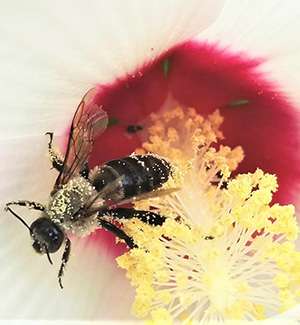
Hibiscus Turret Bee
Ptilothrix bombiformis
** FUN FACT**
Ptilothrix means "feathered hair!"
This species has a special adaptation for nesting in hard-packed soil. It can land on water by spreading its feet wide apart. After sucking up water, it flies back to its chosen nest location and drops the water to soften the soil. As the soil softens, the bee rolls it into round pellets. These pellets are moved out of the nest and form a "turret" at the nest entrance!
Can you spot this bee?
The Hibiscus Turret Bee has hair that resembles fine down, with a dark abdomen and a light brow, fuzzy thorax.
How/Where does this bee nest?
This bee is solitary (meaning it nests alone) and is a ground nester.
- WILSON, J. S., & CARRIL, O. J. M. (2015). THE BEES IN YOUR BACKYARD. AMSTERDAM UNIVERSITY PRESS
- Shepard, B. M., Farnworth, E. G., Williams, D., Bisner, A., & Lowcountry Biodiversity Foundation. (2019). Insect Pollinators of the South Carolina and Georgia Lowcountry. Lowcountry Biodiversity Foundation.

Thistle Long-Horn Cuckoo Bee
Triepeolus donatus
** FUN FACT**
This bee species preys upon the Thistle Long-Horn Bee - which are ALSO found at Flight 93 National Memorial. Cuckoo bees are proof of a healthy and diverse ecosystem.
Can you spot this bee?
The Thistle Ling-Horn Cuckoo Bee has striking green eyes and is wasp-like in appearance with crisply defined markings. The thorax appears to "smile" with two small dots and "mouth" at the bottom of the scotum. With red legs, this bee ranges 2/5-1/2" in length.
this bee pollinates the following plants these items you may find on your dinner table!
This bee does NOT POLLINATE flowers or gather pollen! This is because it uses the work of other bees gathering pollen to feed its eggs. It does still visit blooms for nectar to eat!
How/Where does this bee nest?
This bee is a cleoparasite (meaning it lays its eggs in another bee's nest). After following the Thistle Long-Horn Bee back to her nest, it uses its pointy abdomen to slit a hole in the side of the host bee's cell, then lays its own egg in the wall of the egg. chamber with the host egg and food supply. The parasite egg hatches almost immediately, and the larvae kills the host larvae or egg. It then eats the pollen store given to the host egg, becomes an adult, and continues this process.
- Georgia Lowcountry. Lowcountry Biodiversity Foundation
- WILSON, J. S., & CARRIL, O. J. M. (2015). THE BEES IN YOUR BACKYARD. AMSTERDAM UNIVERSITY PRESS
- Shepard, B. M., Farnworth, E. G., Williams, D., Bisner, A., & Lowcountry Biodiversity Foundation. (2019). Insect Pollinators of the South Carolina and Georgia Lowcountry. Lowcountry Biodiversity Foundation.

Eastern Carpenter Bee
Xylocopa virginica
** FUN FACT**
Xylocopa means "wood worker!"
These bees are "nectar robbers!" Using their bladed mouth parts, they slice open
the base of a flower and steal the nectar without ever crawling inside!
In Australia, this species is raised in greenhouses to pollinate tomatoes, and
in the Middle East, they are important COTTON pollinators!
Can you spot this bee?
The Eastern Carpenter Bee is smooth, shiny, and has a hairless abdomen. With a bulky black body, it has a golden-yellow thorax with a black spot in the center. Males have a white spot in the middle of their face. This species ranges in length 1/2-1/4".
How/Where does this bee nest?
This bee is parasocial (meaning it nests in small groups and shares the work load) and nests in solid wood or plant material. The older females in the group construct the nest, gather pollen and lay eggs as a collective group.
- SHARP, S., & EATMAN, R. (2019). WILD BEE ID GUIDE - ROCKEFELLER STATE PARK. NYBEE-16DEC2019. HTTPS://WWW.SHARPEATMANGUIDES.COM/ROCKEFELLER-STATE-PARK-BEES-NEW-YORK
- WILSON, J. S., & CARRIL, O. J. M. (2015). THE BEES IN YOUR BACKYARD. AMSTERDAM UNIVERSITY PRESS
- Shepard, B. M., Farnworth, E. G., Williams, D., Bisner, A., & Lowcountry Biodiversity Foundation. (2019). Insect Pollinators of the South Carolina and Georgia Lowcountry. Lowcountry Biodiversity Foundation.
